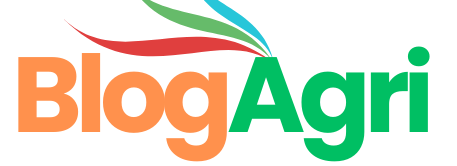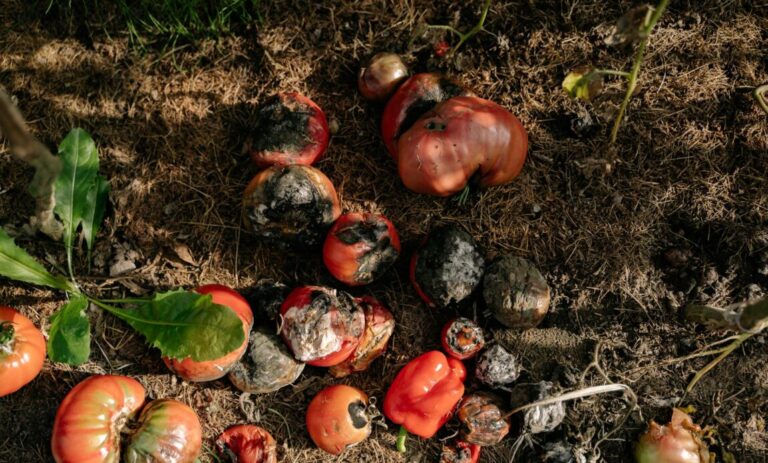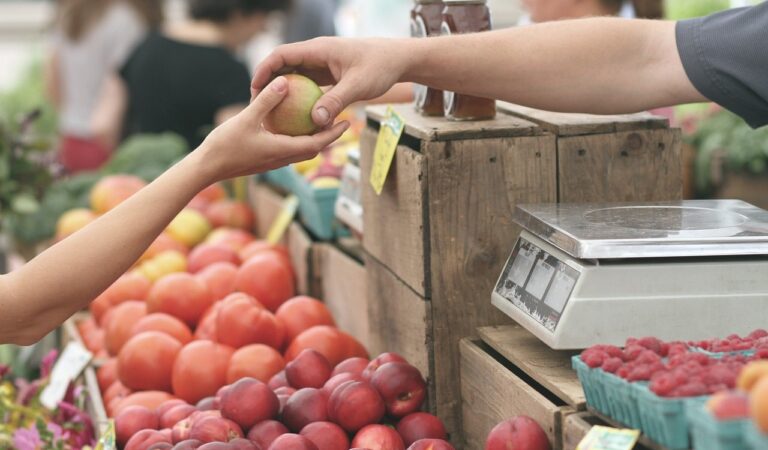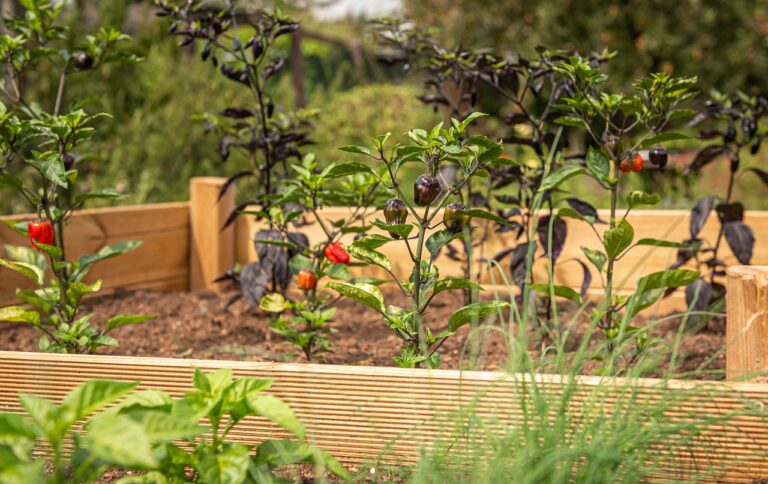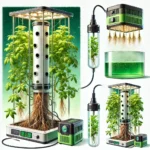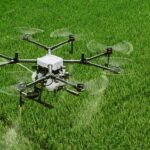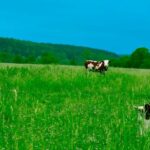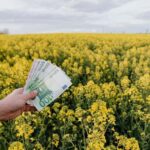Email: blogagri2@gmail.com
Role of Agriculture Drones in Farming Procedures

Agriculture Drones And Its Impact
Are you interested in learning about Ag Drones and drone technology for Agriculture? In this article, we will focus on the various roles that drones play in agriculture, their advantages, the types of drones used, and how they enhance the data-driven approach towards responsible farming.
At first, drones were regarded as toy devices or military utility vehicles, but with time, these unmanned machines have greatly contributed to agriculture. Such support is especially essential in modern agriculture as it provides farmers with advanced tools that help increase efficiency and maximize productivity.
In What Ways Are Drones Utilized in the Agricultural Sector?
Drones in agriculture are used for several purposes, including controlled spraying and monitoring of crops, soil assessment, and managing farm animals. Here are some of the specific ways plants are growing in the agricultural segment of the economy in the form of drone technologies:
Precision Spraying: Applying Agriculture drones to crops becomes powerful when they are used with special spraying systems that are acquired with precision aiming at crops using pesticides, herbicides, and fertilizers. Such techniques minimize wastage and pollution while maximizing efficiency in the coverage of the targeted areas.
Crop Monitoring: Equipped with high-resolution cameras and multi-spectral sensors, drones can capture images of crops from above, assisting farmers in assessing the health of plants, monitoring the occurrence of diseases and pests and their progression, and pinpointing deficient areas.
Soil Analysis: Fowler reports that drones can also be used to conduct soil tests by containing an on-board soil sampling approach to study soil composition, moisture content, and nutrient value. The above-said industry can supply data that helps farmers understand better the management of irrigation and fertilizers, as well as which crops to grow fresher.
Livestock Monitoring: Ag drones too can assess animal behaviors’ such as movement, with the help of GPS systems, enabling farmers to reason about the health status of the animals in their custody.
Mapping and surveying help in drawing up land maps for the farmers. This helps them better understand their farming practice’s land topography, field boundaries, and infrastructure.
Benefits of Drones in Agriculture

The use of drones in agriculture has nursed certain benefits that are changing the face of the industry. Such are some of the benefits likely to be obtained from using the drones on the farms:
- Efficiency: Drones can rapidly capture vast expanses of land, allowing farmers to conduct data collection and perform applications and supervision faster than normal and within accuracy.
- Precision: ‘Ag drones’ with improved geo-referenced sensors have enabled pinpoint delivery of pesticides, fertilizers, and other products, preventing wastage and ensuring complete penetration.
- Productivity: With the help of drones, certain operations can be undertaken automatically and within the optimum period, and useful information can be provided, assisting the growers in making decisions. Thus, productivity and crop output is enhanced.
- Less expenditure on labor: Some of the activities like scouting the fields for pests and treatment applications, which usually require human effort, can be done using drones, hence making the labor force required to save money on labor.
- Improved Safety: Drones can reach places that are dangerous or physically demanding for human workers, hence injuries are less likely to occur, making it overall safer in the farm.
- Sustainability: The precision technologies of the drones that may also assist the farmer in sustaining the ecology are the efficiency in employing agrochemicals and other resources.
Types of Drones Used in Agriculture
The agricultural market has experienced rapid growth in the drone market thanks to the diversification of drone solutions, which are dedicated to one specific farming area. Here are several examples of commonly used agricultural drones:
- Multirotor Drones: These drones, which typically have four, six, or eight rotors, are widely used for precision spraying, crop monitoring, and other precision farming tasks.
- Fixed-Wing Drones: Constructing this drone design allows the operation of these drones in big confined areas and on large-scale mapping and surveilling to cover vast stretches of land under crop farming.
- Hybrid Drones: These types of Drones are capable of vertical take-off and landing and have been integrated with horizontal flight capability to improve efficiency.
- Specialized Drones: Some drones are mounted with special mediums for use in agriculture, such as monitoring the movement of the animals, for example, sheep herding or even soil testing.
This is a short introduction that can very easily pack maximum information.
Drones for Agriculture – Precise Crop Management with Drones:
Drones have become increasingly popular in the field of agriculture in recent years, and there are many reasons for this. It is crucial to notice the following benefits:
- Forage Accuracy: Enhanced drone technology allows precision agriculture input delivery systems to target pesticides, fertilizers, and water exactly where needed without overhead clutter.
- Crop Assessment: Drones facilitate farmers with instant and precise health and condition status of their crops using high-resolution cameras and multispectral sensors.
- Effectiveness: Drones can be used for region surveys quickly, thus enhancing the speed and accuracy of data collection, application, and monitoring by farmers.
- Reduced operational costs: Drones help minimize operational costs while increasing profit margins by replacing some processes with machines, consequently reducing the number of workers needed.
Drones can access areas that may be dangerous or hard to reach for human employees, which lowers the chances of injury and subsequently enhances safety in the farm.
Drones make it easy to be sustainable by reducing the amount of agricultural chemicals used. Their precision tech identifies the proper use of the resources on the farms.
Farmers can attain a lot of data, like crop monitoring, through the use of drones. Thus, these data enable efficient planning regarding the use of resources, crop growth, and management.
On the other hand, even though there are many pros using Drones in Agriculture, I will highlight some of the cons and drawbacks that farmers should take into consideration
Drones for Small Farmer
Drones are quite relatively expensive so the farmers will have to incur exorbitant initial costs, For small farmers this might also be a limitation.
Regulation: The operation of drones in agricultural cases is subject to several applicable laws, rules, and policies regarding the country of location and the nature of agriculture. And understanding how to comply with these legal measures takes time since it can be a long and hard process.
Training: Operating drones is unsafe and normal, so one therefore needs to undergo training, which increases the total cost for the farmers.
Battery Life Constraints: As is the case with other technological gadgets, most of the time, the drone battery will run low, and this is a limitation as far as the radius and flight duration of the device is concerned, which has a real possibility of affecting utility in the case of more extensive farming activities.
Weather Limitations: Drones could be exposed to weather elements such as strong winds or heavy rainfall, affecting their usage.
Data Security and Privacy: Using drones to harvest data in crop farming raises data security and privacy issues, which must be addressed through effective regulations.
Nevertheless, those drawbacks should be taken into account rather carefully but in most cases, the use of drones in agriculture should be promoted despite the presented obstacles because the perfect technology is on the way towards further enhancements and increasing availability.
Agriculture Drones in practice: Aerial crop spraying
The widespread usage of ag drones is in crop aerial treatment. Special spraying devices mounted to drones can apply chemicals, biological control agents, or fertilizers efficiently, precisely, and economically.
There are some benefits that drones will provide compared to traditional methods of ground-based spraying.
- Reduction in the Amount of Pesticides Used: Drones apply herbicides only to the areas in need, and as such, necessary chemicals are only used in the required areas; hence, wastage is minimized.
- Enhancement of Coverage: Drones can cover portions that are difficult for ground-based equipment to access, thereby ensuring extensive crop coverage.
- Speedy Application: Colonies of air activities are achieved as drone applications allow larger pieces to be performed, offering the farmer more window time to apply the treatment as per the change in the environment quickly.
- Improved Safety: Areas that are dangerous or less accessible to human workers can now be covered using drones, which minimizes the chances of coming into contact with harmful agricultural products.
- Precision and efficiency from ag drones enable farmers to enhance their crop protection strategies while protecting the environment and enhancing the health and productivity of the farmer’s crop.
Agriculture drones and sustainability
In addition to improving farming practices, the use of drone technology in agriculture has a place in a wider agenda of sustainable farming. The precision of drones and intelligent data can make it easier for farmers to lessen the environmental impact in several respects.
- Less application of Chemicals: Drones have the benefit of applying herbicides, insecticides, and fertilizers where they are barely required, thus minimizing the total work done and reducing the chances of applying chemicals more than is required.
- Maximization of Resource Use: Drones allow farmers to keep an eye on the soil conditions, the level of water, and the growth of crops, thus resources can be distributed more efficiently and conserved.
- Enhanced Harvest: Crop monitoring and precision farming with the help of drones is likely to improve crop yields, enabling efficient land use and lessening the strain on available resources.
- Low Greenhouse Emission: While incorporating drones in farming, the energy and automation of uses and culturing with drones are said to lower fuel Burnage, leading to lesser greenhouse emissions.
- Focused Policies on Sustainability: With the negative impacts of greenhouse gases, farmers can use the information that has been provided by drones to decide on sustainability practices within the farming business.
Considering that agricultural development will forever be conjoined with problems such as climate change effects, shortage of water, and depletion of resources, the use of ag drones can transform agricultural practices for the better and sustain the earth’s health.
Agricultural Drones and Data Analysis
Drones in agriculture have one of their most pleasing features, which is the endless amount of data that can be gathered to expand farming activities and practices further. Ag drones can be equipped with advanced system sensors and camers to collect data such as:
- Crop Health Monitoring: Drones can acquire aerial and multispectral images that would do great wonders in detecting diseases, pests, and even nutrient deficiencies in crops.
- Soil Analysis: Soil can be sampled by speaking samples to drones, and MMS can be performed on the soil to know the content composition, moisture content, and nutrient contents of the soil to assist in better management of soils by farmers.
- Irrigation and Water Management: Drones can check the amount of water in soils and how effective the irrigation systems are on farmers’ fields, helping them manage water effectively and increase efficiency.
- Yield Mapping: Drones may be utilized to produce crop yield maps, and this will enable the farmers to determine and understand the specific areas of low-output and high-output crop yields, and this will guide the farmers on future planting strategies for resource allocation.
- Livestock Monitoring: In addition, drones can trace the movement and behavior of livestock, and this will be a good management criterion for farmers’ animals health-wise.
Farmers will, therefore, be able to derive vital information from this data, improve their operations, and consequently enhance their productivity and profitability. Such data would also enhance agriculture research by providing means that would enable the growth of sustainable and smart agriculture.

Podcasts of Agriculture Drones
Due to advancing applications of drones in agriculture, there has also been an increase in the number of podcasts discussing the changing dynamics in this field. Such are some of the agriculture podcasts that take drone discussions and incorporate them.
- The Precision Agriculture Podcast: This podcast looks at modern agriculture’s intersection with technology, focusing on using unmanned aerial vehicles in precision agriculture.
- Drone Ag Podcast: Such podcasts include industry veterans who specialize in drones for agriculture and, therefore, bring useful information and tips for the listeners regarding the use of drones in different farming areas.
- AgTech So What?: The podcast covers various topics related to agricultural technology, including agricultural drones that are used to monitor crops, spray pesticides, and detect data.
- Drone Deer Recovery: In this podcast, the focus is laid on sharing the latest news on the use of drones in agriculture. This includes interaction with key players and professionals in the field.
- The Agribusiness Podcast: Although not specifically tailored towards drones, the podcast regularly has episodes in which the use of these flying machines in agriculture is discussed.
These podcasts can greatly assist farmers, agronomists, or anyone working in the agricultural industry who wants to keep their finger on the pulse of the appropriate use of drones in farming.
Conclusion
Using drones in agriculture has brought about a new phase in the operation of agricultural activities with precision, efficiency, and sustainability. As we have seen in this article, ag droning has fundamentally changed how farmers do crop scouting, precision application, soil sampling, and animal husbandry.
Drones have transformed the information age into an age. Now farmers are better equipped in decision-making through sensors, GPS, and analytics. That help improve resource use efficiency and the profitability of the farming business. Besides, agricultural drones are more effective for more sustainable farming as they assist in reducing the dirtiness of farming due to their greater accuracy.
As the world of agriculture keeps on changing and improving, drones will always come in the future. Because better and new uses for that technology will always be found as more challenges in farming arise. With the adoption of this revolutionary change, we can strive towards achieving a situation where farming is more productive, environmentally friendly, and meets the needs of today’s and future farmers.
To know more about how ag drones can change farming operations in our context, I urge you to browse through our resource center for ag drone operations. All insights, case studies, and guides regarding the use of drones in agriculture are available on our website in order to aid you in such farming practices. In particular, I hope to entice you to browse through our pages so that we collectively effect this change and make your farm more sustainable and productive than ever before.
